Source: The Conversation (Au and NZ) – By Jane Lydon, Wesfarmers Chair of Australian History, The University of Western Australia
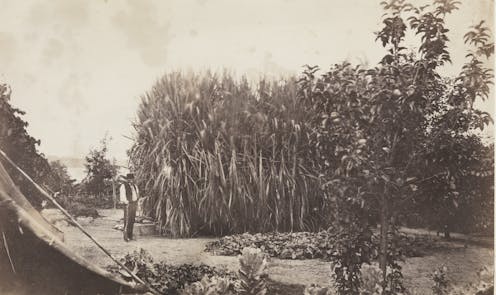
As countries around the globe struggle to come to terms with the legacies of their imperial and colonial pasts, much debate about truth-telling focuses on how we remember individuals. The statues and street names honouring the achievements of eminent white men are now often seen as monuments to their privilege, secured at others’ expense.
In Bristol, England, the toppled statue of slave trader Edward Colston now lies in a museum, daubed with red paint. In Australia, Captain James Cook is a contested national symbol. In Perth, Western Australia, recent proposals to change the name of the City of Stirling have been hotly debated, prompted by the role of the first governor, Sir James Stirling, in the 1834 Pinjarra Massacre.
This public focus on individuals is not surprising. Today, biography is one of the most popular forms of history. Tracing an individual life helps make the past seem more tangible and accessible. Stories of prominent individuals allow people to vividly imagine historic processes such as slavery, exploration and colonisation.
However, the focus on individuals does carry risks.
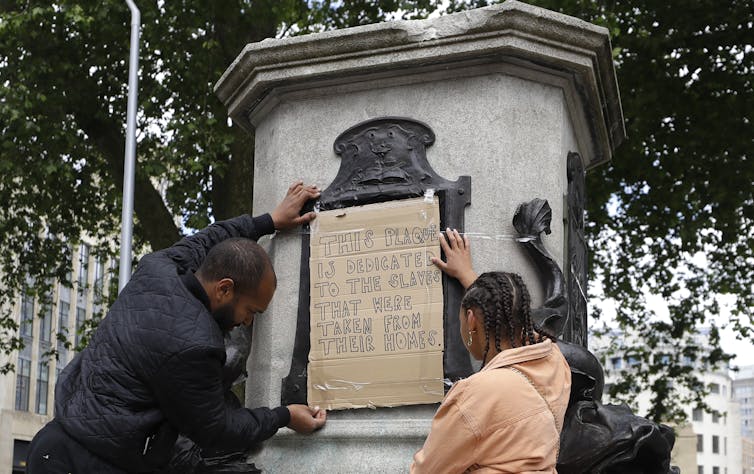
Kirsty Wigglesworth/AP
The eminent historian Greg Dening once suggested we seek reassurance by demonising historical figures such as Captain Bligh, popularly remembered for his theatrical brutality during the Mutiny on the Bounty. Our cartoon-like stereotype of Bligh, he wrote, makes “a comfortable sort of villain” for the modern observer.
Creating monsters of historical figures serves the dual purpose of allowing us to feel both comfortingly distant from troubling historical practices, as well as morally superior to the past.
Some find this tendency to take down (literally and figuratively) eminent colonial and imperial figures personally discomfiting. Australians are enthusiastic about genealogy, and sometimes deeply invest in their family histories. It can be confronting to find unpleasant evidence about our forebears, or to see them criticised.
Yet we have known for a long time that although acts such as the Pinjarra Massacre were evil, the individual perpetrators of those acts are not always recognisable as monsters. This is the banality of evil, in the words of political philosopher Hannah Arendt: in describing Adolf Eichmann, an architect of the Holocaust, as “terrifyingly normal”, she argued for his disengagement from the impact of his actions on others, as he simply followed the rules of his regime.
So we must be clear about how we interpret individual lives. Their experience gives us powerful insight into historical processes. When we acknowledge the bad as well as good in historical figures, we create a more complex sense of the past, which allows for moral choice.
But historical processes such as enslavement, conquest and colonisation are larger than the individual leaders we tend to focus on — and responsibility for their legacies should be collective.
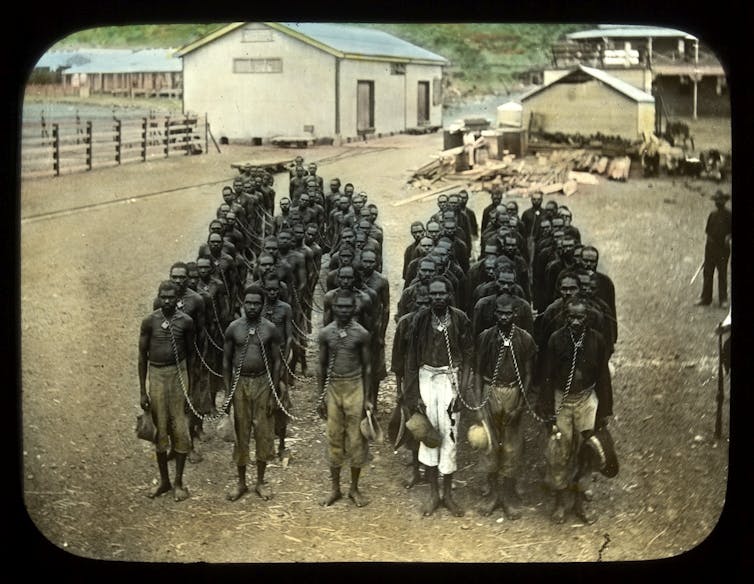
1898-1906.
State Library of Victoria
Tracing movements
When Britain legislated to abolish slavery in the British Caribbean, Mauritius and the Cape Colony in 1833, it awarded the equivalent of £17 billion in compensation to slave owners ($A31 billion). Detailed records documented how individual claimants were awarded compensation for their “property”. This information is now digitised in a database hosted by the Centre for the Study of the Legacies of British Slavery at University College, London.
Building on this data and other sources, our research project applies a biographical method to trace the significant movement of peoples, funds and practices from the Caribbean, where slavery was practised for hundreds of years, to the new Australasian colonies. It reveals a re-orientation of the empire, as imperial families implicated in Atlantic slavery looked for new colonial vistas.
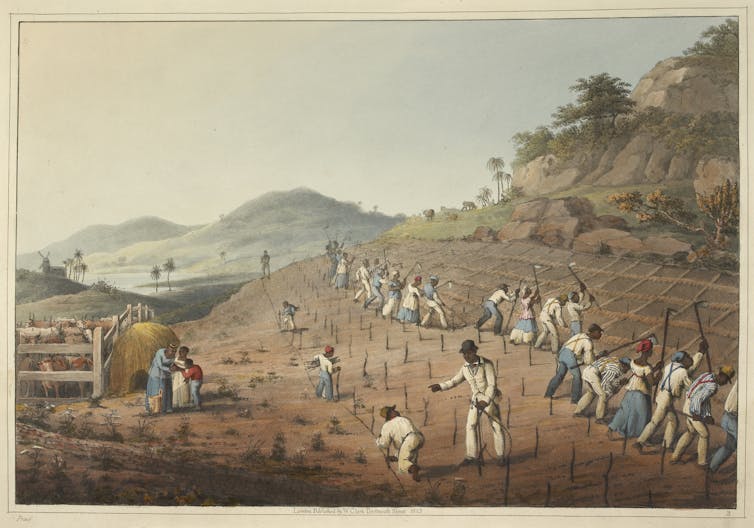
Wikimedia Commons
Each of the Australasian colonies was shaped to some extent by the capital, ideologies and personnel of Britain’s Atlantic slave system. In the wake of emancipation, some West India merchant houses re-oriented their businesses from the Caribbean to the Antipodes.
The most significant example so far identified is the Bristol firm of Miles, Kington and Co. Senior partners, Philip John Miles and his nephew, Thomas Kington, were UK-based financiers and slave owners. They derived tens of thousands of pounds from compensation claims for enslaved people, relating to multiple estates in Jamaica and Trinidad.
After emancipation, Miles, Kington and Co. expanded to Melbourne and Lyttleton in New Zealand, dispatching members of the next generation as “resident members” of new branches during the 1850s.
These included Kington’s son, Philip Oliphant Kington, who was elected to both the committee of the Melbourne Cricket Club and the Melbourne Chamber of Commerce, when he arrived in Victoria in 1855.
From the Caribbean to Swan River
Established in 1829, in the immediate lead up to slave emancipation, Swan River in WA was the first free Australian colony to be funded by private capital. Stirling was just one of those with connections to slavery who helped found it. Others arriving on the WA “first fleet” included Charles Dawson Ridley and James Walcott and their families.
They had journeyed from Demerara, now part of Guyana, back to England, before embarking for Swan River. The mainstay of Demerara’s economy was sugar, grown on plantations hacked out of tropical rainforest by enslaved people, under a regime harsh even by contemporary Caribbean standards.
Ridley and Walcott sold their Demerara property before 1833, perhaps because they knew slavery was coming to an end. Or perhaps, they left because of the bloody 1823 Demerara rebellion, which involved more than 10,000 slaves and galvanised the British abolitionist debate.
Ridley and Walcott were business partners and almost certainly brothers-in-law. They were among the first large land grantees in WA, awarded prime allotments on Wadjuk Noongar Boodjar (Country), on the Swan River. Their substantial capital gave them their pick of the land grants within the fledgling colony, occupying sites directly opposite the governor himself.
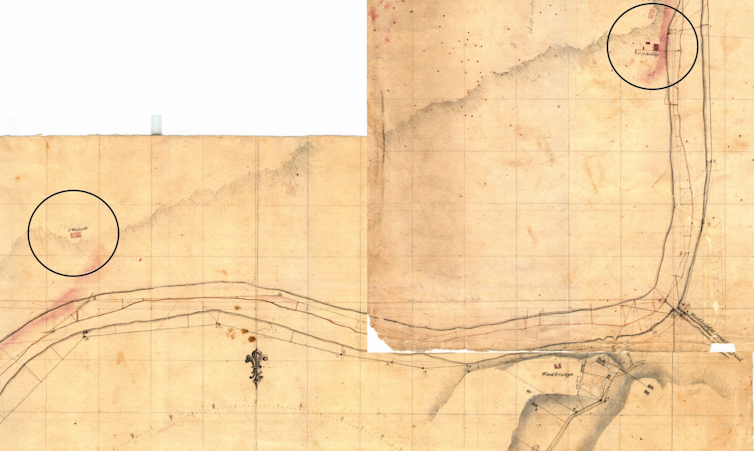
S234- cons3844 010, 012. State Records Office of Western Australia.
Today, one can visit the National Trust-managed property Woodbridge, which Stirling named after his wife Ellen’s family home in Surrey, England. Eating lunch in the riverside café, or standing on the pontoon below, one gazes across the water to Ridley’s and Walcott’s former acreage, now occupied by vineyards and wedding venues.

Jane Lydon
As colonists spread eastward into the Avon Valley, Ridley and Walcott took up land here too. Walcott was granted 4,860 hectares south of York, which became known as the “Walcott Estate”. But he overextended and was forced to auction off his holding in 1839.
Ridley also took up land near York in 1838, and began to advertise for wheat and “hands” to clear land and plough at his Baylie Farm. By 1840, this land was judged among the best sheep and grazing “runs” in the district. In 1843 Ridley first proposed an export trade in a timber known to Noongar as jarrah. He then drove the sandalwood trade, which boomed until local supplies were exhausted in 1848.
Barbados-born Ridley also urged the cultivation of sugar cane, not as a staple product, but merely to supply the colony with sugar, syrup, molasses, rum, vinegar, and conserves. Based on his Caribbean experience, he argued that Perth’s climate could be managed to grow this crop successfully.
So did St Kitts-born Archibald Burt, who came to Perth in 1860, becoming chief justice of the Supreme Court of Western Australia. At the time of abolition, he was awarded compensation of around £86 for three estates on St Kitts with ten enslaved people, including Sarah, a washerwoman aged 40; John, a house servant aged 12; and a one-year-old baby. Burt retained West Indies interests throughout his life.
But the great problem for colonists aspiring to become landed gentry was a lack of labour, desperately needed to clear and work the land. Free men would not willingly do this work. Among the “big York farmers”, Ridley was a prime mover in the district’s Agricultural Society, which promoted a variety of labour schemes. They sought to put Noongar to work, driving an increasingly harsh regime of Aboriginal discipline.
Ridley was also secretary in May, 1833, when the society announced an “apprenticeship” scheme. One of the earliest British child migration programs, it brought out juvenile offenders known as the Parkhurst boys, and is considered a prelude to convict transportation. Ridley died in 1845, but a few years later, against the wishes of most colonists, the rich York pastoralists succeeded in making WA a penal colony. The first two ships carrying convicts arrived at Fremantle in 1850.
We might see Ridley’s and Walcott’s role in Swan River as a translation of their Caribbean experience, in their exploitation of land and its resources, and their greed for cheap labour. Learning from WA’s example, as abolition loomed, British entrepreneur Edward Gibbon Wakefield codified slavery’s commodification of land and labour in his influential principles of “systematic colonisation”. For the first time, Indigenous Country was sold — not given to colonists — at a price so high non-whites and the working-classes were forced to work for the rich.
Other colonies and slave compensation
After 1833, numerous other families connected to the slavery business turned to the settler colonies in the context of intense imperial re-organisation. Further colonies were founded within a few years of WA — South Australia in 1835, Victoria (the Port Phillip District) in 1836, and New Zealand in 1841.
Some of their earliest settlers, too, had received British government compensation for emancipated slaves.
London-based merchant George Fife Angas, for example, provided much of the capital required to colonise SA, drawing on compensation funds. Angas had followed his father into coach-making, ensuring a supply of slave-produced mahogany from British Honduras by establishing his own shipping business in 1824.
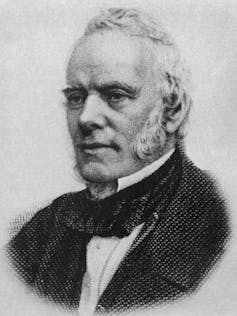
Wikimedia Commons
After abolition, he collected around £7,000 on behalf of Honduran slave owners. The new colony enjoyed a monopoly on investment conferred by the Bank of South Australia and Union Bank of Australia, both established by Angas. His South Australian Company provided crucial investment in land and infrastructure.
Other beneficiaries moved to the longer established colonies of New South Wales and Van Diemen’s Land. As Emma Christopher has discovered, pioneers of Queensland’s sugar industry brought capital, but also their knowledge of sugar cultivation and experience of using forced labourers.
Louis Hope, for example, who established the Ormiston sugar plantation, was the grandson of Sir John Wedderburn, a wealthy Jamaican planter and importer of slaves, but played down his connections to slavery. Hope procured indentured Pacific Islander labourers to work at his property, and helped craft Queensland’s Polynesian Labourers Act of 1868, introducing a clause borrowed from the Caribbean to tie labourers to their employer’s estate.
Many other settler colonisers — and their descendants — hid their connection to Atlantic slavery, although not all were so shy. Sir Samuel Osborne Gibbes, was compensated for more than 300 enslaved people in Barbados and St Vincent before emigrating to New Zealand, where he spent eight years in the colony’s Legislative Council and named his new estate Springhead — after his former Barbados plantation.
Judging the past
Individual life stories can bring the past to life and reveal the dark side of colonial achievements such as frontier violence.
In this way, certain individuals have come to symbolise the trauma of frontier conflict and exploitation for Aboriginal descendants, explaining why it is hurtful for them to see such figures celebrated uncritically.
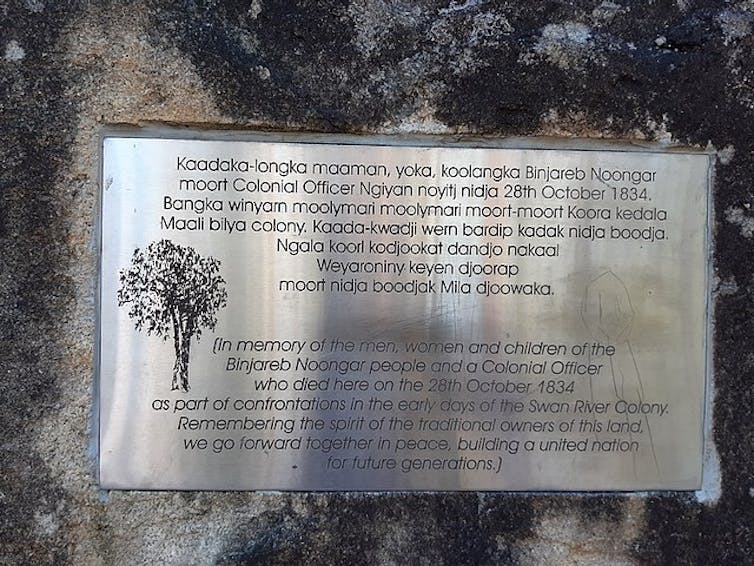
Wikimedia Commons
But just as some Britons — like Thomas Clarkson and Hannah More — devoted much of their lives to overturning slavery, some colonists, such as missionary Joseph Orton, perceived their impact on Aboriginal people and sought to protect Indigenous people and their rights.
These different reactions challenge the argument that we should not judge the past on our terms, by demonstrating that many people in the past shared our sense of justice.
Colonisation was enacted by all those who came to Australian shores, rich and poor, willing or reluctant, and the inevitable effects on Indigenous people resulted from this collective and continuing process.
Colonial legacies such as white privilege and Indigenous disadvantage — exemplified by the Stolen Generations and appalling Aboriginal deaths in custody statistics — are therefore a collective responsibility all Australians must shoulder.
This is the first in a series of articles The Conversation will be publishing exploring legacies of slavery in Australia.
![]()
Jane Lydon receives funding from the Australian Research Council.
Zoë Laidlaw receives funding from the Australian Research Council.
– ref. Friday essay: beyond ‘statue shaming’ — grappling with Australia’s legacies of slavery – https://theconversation.com/friday-essay-beyond-statue-shaming-grappling-with-australias-legacies-of-slavery-162934








